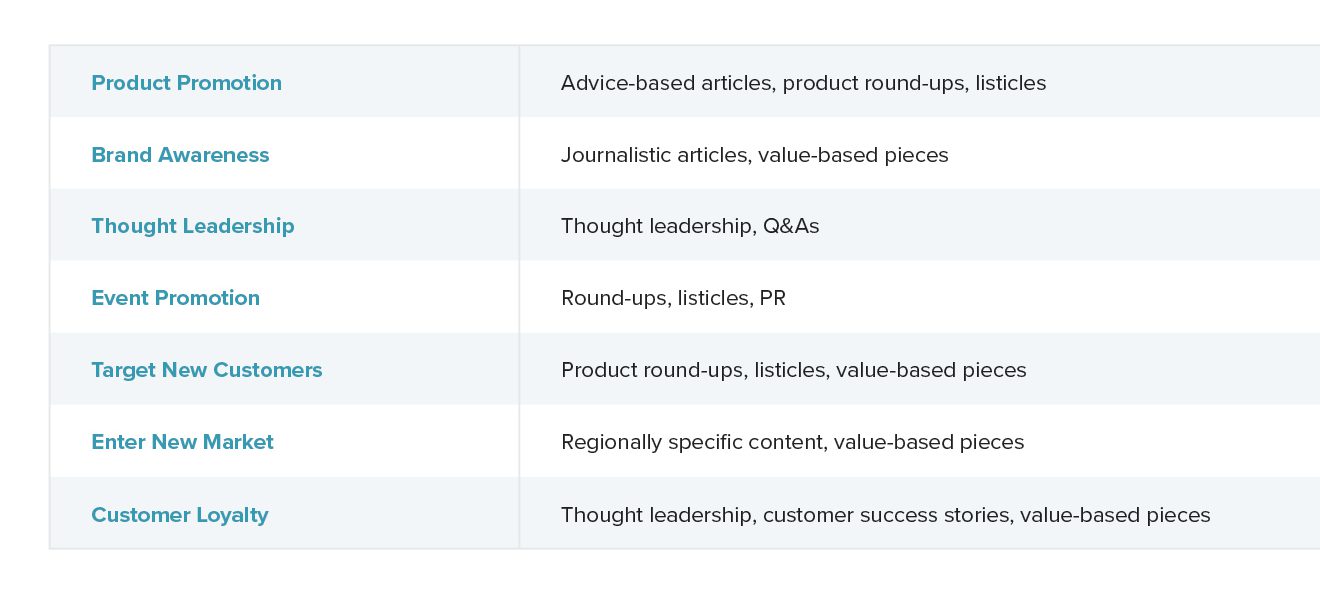
How to Pull Incredible Content Ideas from Your Marketing Strategy
When brainstorming content ideas, most advertisers start at the same place: the marketing strategy.
Marketing strategies have common components, such as goals, themes and taglines that the advertiser wants to promote over the next year or quarter. It can be a real challenge, however, to take these assets — which are often designed by and for advertisers, and not content creators — and turn them into captivating stories.
Insights from a marketing strategy may not immediately lend themselves to story concepts, but with the right guiding advice, it’s easier than you think to come up with your next great idea. Keep the following four components in mind when reviewing your strategy, and you’ll be well on your way to creating useful, engaging content ideas.
Goals and Objective
The objective is the “why” behind your marketing plan, and it outlines what you’re doing and when you’re doing it. An objective can be as simple as, “Inform the target audience about our new product.” Goals can also be broader like, “Position the company as a leader in our market.” If at any point during the content ideation process you get stuck, referring to your company’s marketing objective should help you move forward.
For example, if your goal is to raise awareness around a specific service, consider what problems your product solves and find a way to offer advice related to that problem. This will ensure that people looking for help with that problem are connected with your company’s solutions.
If you want to encourage your readers to actually purchase your product, first think about how your product or services answer your customer’s problems.
If your goal is to position your company as a thought leader in your field, consider creating an article that speaks to the future of your industry — authored by one of your company’s C-Level executives. An article with a powerful byline can catch the eye of other businesses in your industry, and even potential employees.
The table below has some general advice for what kind of content works best for different marketing objectives. Canada’s national tourism body, Destination Canada, used a variety of article formats when they wanted to entice Americans to visit the country in 2017. Using a mix of listicles and regionally specific content, they were able to raise awareness of timely experiences worth a trip north of the border; journalistic articles profiled features of Canada that make it a unique cultural destination.

Audience
Who is the target audience? Who are you selling your product to? Beyond your company’s total audience, think about the people who would be most interested in this specific marketing campaign. Consider qualities such as location, average household income, age and interests. Having a well-defined audience — some brands even create ideal customer personas — will help you craft compelling content that speaks to the needs and interests of your audience, helping you earn their attention and win their trust.
Knowing who you want to reach is also the first step in finding the right publisher to place your sponsored content with. The Ontario Tourism Marketing Partnership Corporation used this strategy in their St. Lawrence Parks campaign, in which they wanted to target the Montreal market to promote tourism to the region. They needed a way to reach French-speaking families, so they placed content with three French language digital publications, highlighting the family-friendly activities available at the parks. Targeting such a specific audience paid off, and they saw an incredible 8.83% conversion rate from the articles’ branded footers back to their travel booking site. Pressboard lists important audience demographic information for all publishers in our Marketplace, which you can use to look for a match between your ideal customer and a publisher’s audience.

Desired Next Action
This refers to what you want your target audience to do after they see your content, and knowing this will help you decide what to create.
The most common desired next action from a piece of sponsored content is for the reader to visit your company’s website. This goal actually gives you the most flexibility when ideating. One suggestion is to write timely content that offers urgent advice to readers who need it. For example, banks often promote themselves in February by writing tip-based tax season articles.
Your brand’s marketing strategy is a gold mine for great content ideas — you just need the right framework to be able to find them.
If you want to encourage your readers to actually purchase your product, first think about how your product or services answer your customer’s problems. Once you figure that out, you can craft a piece of content that addresses the challenge your target audience may be experiencing, then offer advice related to that problem, positioning your product as the (or a) solution. The car sharing service, car2go, knew that their primary goal with sponsored content was to drive signups for their service, so they created content that directly highlighted the benefits of car-sharing.
Alternatively, if you have a series of products that can stand as a collection of solutions or offerings for one key audience, try creating a completely shoppable article. Refinery29 does this exceptionally well — they understand that their readers want to learn about trendy, fashionable and useful items, so they often partner with brands to create straight-forward sponsored content in which the brand can celebrate their products.
That said, this kind of article doesn’t work on every site, so be mindful when finding a publication partner for this type of content.
Product
These are the points that separate your company’s product or services from the competition. They’re also usually the points in the marketing strategy that translate most directly into content ideas. Think about what makes your product unique and use those points as inspiration for content. For example, TD, one of Canada’s five big banks, wanted to promote their range of product offerings that make moving to Canada easier. The blend of tools and advice targeted at new immigrants was a unique selling point, so they created a series of articles that offered both financial and general support to people in a period of transition.
Another case study comes from the tourism organization for Banff and Lake Louise. They needed an impactful way to promote the 2017 Banff Craft Beer Festival that would stick out from the crowd. The marketing strategy described the festival, located in Banff National Park, as “The World’s Most Beautiful Beer Festival,” so this copy was used in headlines to differentiate the event from other beer festivals happening that year.
Your brand’s marketing strategy is a gold mine for great content ideas — you just need the right framework to be able to find them.
Take the time to evaluate your marketing plan through a content lens, and you’ll end up with content that aligns with your brand’s goals and values while also appealing to your target audience.
(Disclaimer: this content was originally published in The Science of Storytelling Issue 4: Automotive)
As part of our Ask the Experts series, we’re learning from the world’s leaders in influencer marketing and sharing their advice. In this..
Get your Content Marketing Fix
Sign up to receive tips on storytelling and much more.
We promise to respect your inbox.



